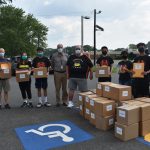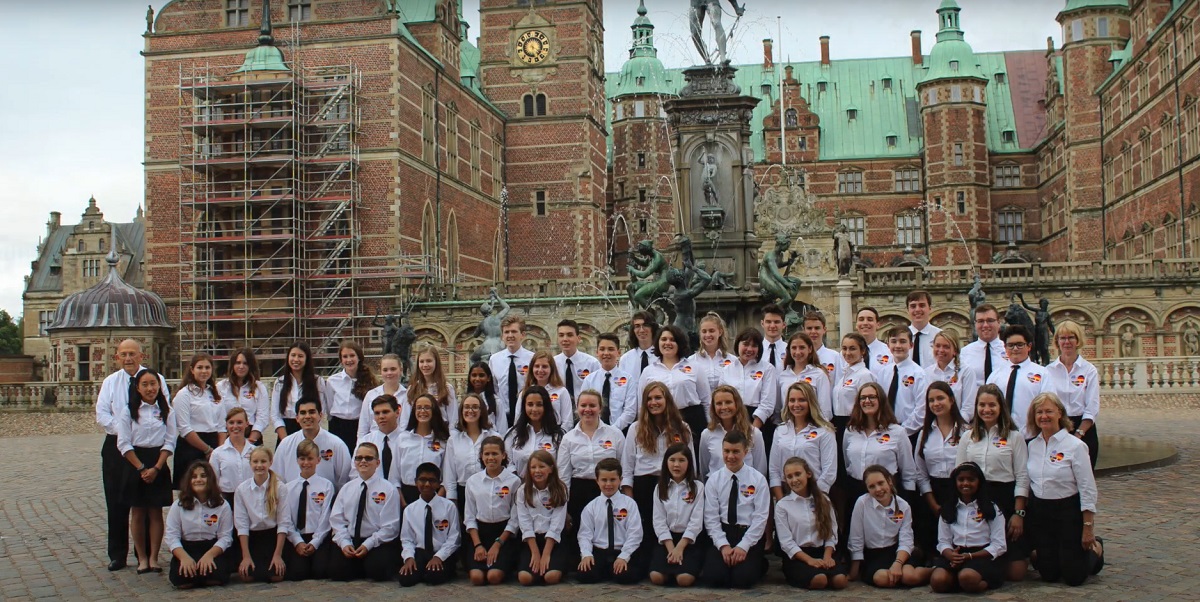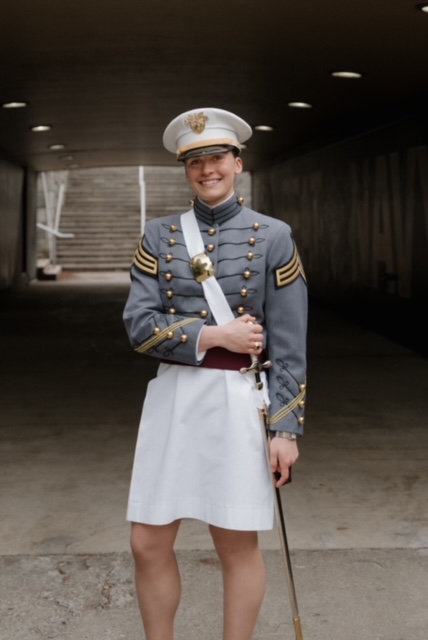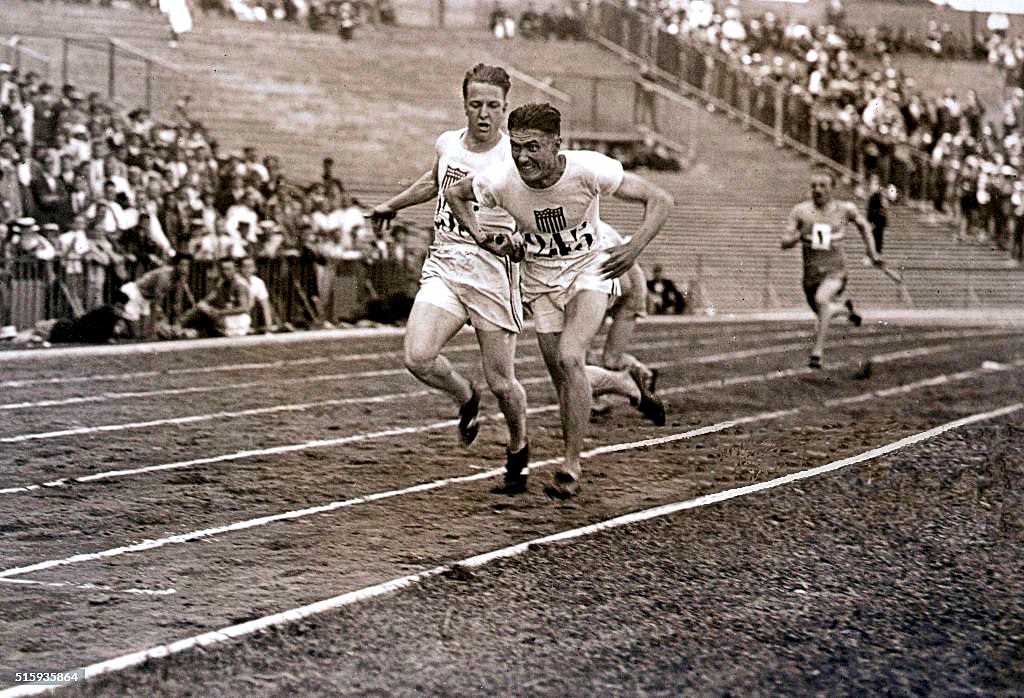- Christian Tsai (in forefront) and Maria Heffernen (background) unload shields from their cars.
- From left to right: Moorestown Robotics’ parents Chris Schaffer and Zohreh Vojani; Combustible Lemons team member Keyan Vojani; Superintendent Scott McCartney; Combustible Lemons Coach Edward Wright; Combustible Lemons team members Christian Tsai, Maria Heffernen and Evan Schaffer.
- Combustible Lemons team member Keyan Vojani carries a few boxes of shields.
When life hands you lemons, some of us make lemonade.
When the COVID-19 pandemic sidelined the Combustible Lemons, Moorestown High School’s FIRST Robotics team, members decided to follow the age-old adage and make the most of their time by 3D printing face shields for local front-line workers.
Now, the team is paying it back to the school district that gave them the knowledge and know-how to create the protective equipment. This summer, the team made enough face shields for every teacher in the district, having created 1,500 of them.
Their initial efforts began in the spring. Maria Blatcher, an advisor with Moorestown Robotics, was inspired to start a project printing face shields after reading about a robotics team in Michigan that created the equipment for local first responders. She emailed her team, asking if anyone who owned a 3D printer wanted to get involved, and not longer after, they got to work.
The team subsequently emailed friends involved in robotics at other local schools, and before long, they had 3D printed more than 6,000 face shields for local medical workers. Moorestown High School senior Maria Heffernen said when the school learned about the team’s efforts, Principal Andrew Seibel reached out to see if the team could print shields for high school staff.
The original request in June was for around 500 shields, but the team decided to do one better. They set out to make enough shields to cover all Moorestown Township Public Schools staff, with a self-imposed deadline of Aug. 17.
Christian Tsai, a fellow senior and team leader along with Heffernen, said the district purchased the necessary filament and transparency sheets for the team. The rest of the material costs were covered by a donation from Moorestown Robotics.
A team of around seven students got to work. Using a shared code, they printed stacks for the head pieces that are broken apart and sanded. From there, a clear transparency is hole punched and attached to the headpiece.
In order to ensure safety, team members acted individually, with each student printing at home and utilizing contact-free dropoffs and pickups when organizing their supplies. Heffernen said her house acted as an unofficial warehouse where fellow team members brought their completed shields.
For two months, team members worked around the clock to meet their deadline. They held weekly Zoom meetings to discuss their progress and ensure they stayed on track. Ultimately, they produced 1,500 face shields and 7,500 replacement transparency pieces for faculty and staff in the district.
Heffernen said while the teachers will most likely still wear masks underneath, the shields offer an added layer of protection against particles entering the eyes.
The shields were delivered to the high school on Aug. 27, in time for the start of the new school year. Tsai said the team was eager to help make teachers a little more comfortable as they prepare for their return to the classroom.
“You could see it as another way to give back to them,” Tsai said. “Since we’re able to do this, we’re giving back to their teaching.”






